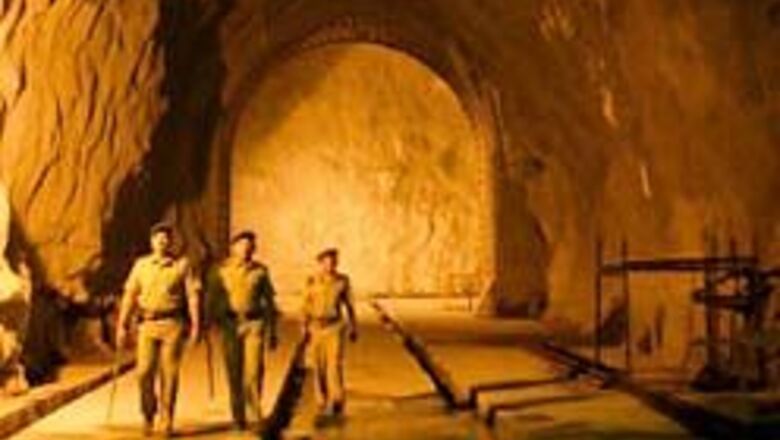
views
Gangtok: Ambitious plans to build dams and hydro power projects throughout the hills of the northeast have trodden on some sensitive toes in the troubled region.
The Government and the World Bank say there is enormous - and so far unrealised - potential to tap rivers throughout the eight northeastern states.
The projects could generate around 60,000 MW of power - which is double India's current hydro output and more than half of today's total generating capacity - while the country's demand for energy is growing rapidly.
Project revenues could potentially double the region's net domestic product and even curb flooding, experts say.
However, locals fear that tens of thousands of people will be forcibly evicted from their homes, the environment irrevocably damaged, and ancient ways of life imperilled.
In a region where dozens of insurgent groups are already at loggerheads with the Centre, the Government knows it needs to tread carefully.
It acknowledges the need to improve accountability and transparency, as well as involve local communities, and will hold a "workshop" in New Delhi on June 25-26 to finalise its plans.
But trust is in short supply.
People here equate the Government with corruption and misrule and have little faith in the authorities' ability to behave responsibly and sensitively.
"For whose benefits are these projects planned?," asked South Asia Network on Dams, Rivers and People's Himanshu Thakkar.
"All the social and environmental costs would be borne by the people of the region. And if past experience is any guide, these costs are going to be heavy and mostly paid by the poorest, who depend on the natural resources around them," he added.
Himalayan Paradise
Fast-flowing rivers running through the Himalayan mountains of Arunachal Pradesh have developers licking their lips.
The state government plans to build 89 dams and hydro projects but locals say they have not been properly consulted.
"The state is auctioning off Arunachal Pradesh without the consult of its people," said Arunachal Citizens Rights member, Bamang Anthony.
"Promoters are talking development. We also want development but we want to know what kind of development they want in our land. There is no transparency."
Anthony said that the dams will submerge thousands of hectares of land, including some towns and displace more than 30,000 people.
And the Government's track record in rehousing the displaced from major development projects leaves little room for confidence.
Dam construction could also disturb the fragile ecology of the eastern Himalayas, home to thousands of plant species.
A dam on River Subansiri threatens one of the last remaining habitats of the endangered Gangetic dolphin, environmentalists say.
Dam construction also poses a special risk in one of the most earthquake-prone regions of the world.
Dam in troubled Land
The state of Manipur is home to a many decades-old insurgency against the Government that has claimed more than 10,000 lives.
For 20 years, the Government has talked about a 1,500 MW, 162-metre-high dam in the rebel-infested south of Manipur, at the intersection of the Tuivai and Barak rivers.
The Tipaimukh plan finally got the go-ahead during a period of direct rule from New Delhi in 2003 and construction work has started on what will become the biggest dam in eastern India.
The Government promises it will provide water to farms and villages in the area, control floods, and even promote tourism - besides giving everyone access to electricity.
However, local people became angry when the company, which built a barrage 17 km downstream from the dam, failed to keep a promise to supply irrigation water to nearby paddy fields.
Villagers attacked workers and burnt sheds at the site, prompting the Government to send in 1,000 soldiers.
Human rights groups allege the troops have begun harrassing local women.
"Instead of fulfilling our demands to review the whole project, the Government has sent the military to suppress our voice," said head of the Dam Affected Villagers Organisation, Thanmi Kashung.
"Soldiers are now threatening our people."
Run of the river
In order to avoid similar problems, other northeast state governments are focusing on "run-of-the-river" projects: rivers are diverted through underwater channels but no dam is constructed, no reservoir created, and few people displaced.
But in the Himalayan state of Sikkim, plans to build six such projects along the River Teesta to generate more than 3,000 MW have proved no more popular with local people.
The ancient Lepcha tribe traditionally revere the river, and fear its disappearance into a series of tunnels will be accompanied by their own progressive marginalisation.
Tunnelling and blasting have already caused landslides, and springs are drying up.
Locals also complain that muck and rock debris is being dumped in the river, while thousands of migrant workers are entering the state and swamping the local culture of the Buddhist, Christian and animist Lepchas.
"The history, the ethos, the folklore of Sikkim is connected with the Teesta and it is practically going to vanish," said member of Affected Citizens of Teesta, Tseten Lepcha.



















Comments
0 comment